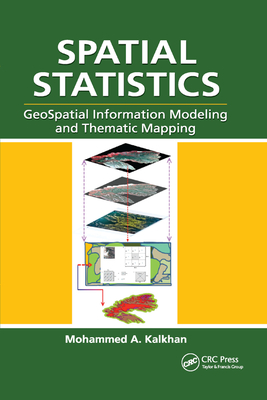Econometrics and Data Science: Apply Data Science Techniques to Model Complex Problems and Implement Solutions for Economic Problems
暫譯: 計量經濟學與數據科學:應用數據科學技術建模複雜問題並實施經濟問題解決方案
Nokeri, Tshepo Chris
- 出版商: Apress
- 出版日期: 2021-10-27
- 售價: $1,560
- 貴賓價: 9.5 折 $1,482
- 語言: 英文
- 頁數: 248
- 裝訂: Quality Paper - also called trade paper
- ISBN: 1484274334
- ISBN-13: 9781484274330
-
相關分類:
Data-mining
海外代購書籍(需單獨結帳)
相關主題
商品描述
Chapter 2 Univariate Consumption Study Applying RegressionThis chapter introduces a simple linear regression model known as the ordinary least-square model. It applies the model to determine whether changes in lending interest rate (%) influence changes in final consumption expenditure (current US$) in the USA. It contains ways of conducting covariance analysis, correlation analysis, model development, cross-validation, hyperparameter optimization, and model evaluation.Sub-topics● Context of this chapter● Theoretical frameworka) lending interest rate (%)b) Final consumption expenditure (current US$)● The normality assumptiona) normality detection● Descriptive statistics● Covariance analysis● Correlation analysis● The Pearson correlation method● Ordinary least squares model development using statsmodels● Ordinary least squares model development using SciKit-Learna) Cross-validationb) Predictionsc) Intercept and coefficients estimationd) Residualse) Other ordinary least-square regression performance metricsf) Learning curve● Conclusion
Chapter 3 Multivariate Consumption Study Applying RegressionThe preceding chapter carefully covered simple linear regression-a model for predicting continuous response variables using a predictor variable. There are cases where there is over one predictor variable. This chapter presents ways of properly fitting multiple variables into a regression equation. It applies the ordinary least-square model to examine whether changes in social contributions (current LCU), lending interest rate (%), and GDP growth (annual %) influence changes in final consumption expenditure (current US$). First, it applies the Pearson correlation method to study the correlation among the variables, and then it implements the Eigen matrix to determine the severity among variables.Sub-topics● Context of This Chaptera. Social contributions (current LCU)b. Lending interest rate (%)c. GDP growth (Annual %)d. Final consumption expenditure (Current US$)● Theoretical framework● Descriptive statistics● Covariance analysis● Correlation analysis● Correlation severity detection● Dimension reduction● Ordinary least squares model development using statsmodelsa. Residual analysis▪ Residual autocorrelation● Ordinary least squares model development using sciKit-learn cross-validationa. Hyperparameter optimizationb. Residual analysis▪ Residual autocorrelationa. Learning curve
Chapter 4 Forecasting GrowthThis chapter covers a time series analysis model recognized as the additive model to forecast future instances of future GDP growth (annual %) in the U.S. Before implementing the model, it first discusses time series analysis assumptions, thereafter it covers tests for stationarity, white noise, and autocorrelation and different models for time series analysis.Sub-topics● Descriptive statistics
商品描述(中文翻譯)
第1章 經濟計量學導論
本章為本書的初步章節,涵蓋了數據科學實踐在經濟計量學中的應用。
子主題
● 經濟計量學
● 經濟設計
● 理解統計學
● 學習建模
● 深度學習建模
● 結構方程模型
● 宏觀經濟數據來源
● 本書的背景
● 實務意涵
第2章 單變量消費研究應用回歸
本章介紹了一種簡單的線性回歸模型,稱為普通最小二乘模型。它應用該模型來確定貸款利率(%)的變化是否影響美國最終消費支出(當前美金)的變化。內容包括進行協方差分析、相關分析、模型開發、交叉驗證、超參數優化和模型評估的方法。
子主題
● 本章的背景
● 理論框架
a) 貸款利率(%)
b) 最終消費支出(當前美金)
● 常態性假設
a) 常態性檢測
● 描述性統計
● 協方差分析
● 相關分析
● 皮爾森相關法
● 使用statsmodels開發普通最小二乘模型
● 使用SciKit-Learn開發普通最小二乘模型
a) 交叉驗證
b) 預測
c) 截距和係數估計
d) 殘差
e) 其他普通最小二乘回歸性能指標
f) 學習曲線
● 結論
第3章 多變量消費研究應用回歸
前一章仔細介紹了簡單線性回歸——一種使用預測變量來預測連續響應變量的模型。在某些情況下,可能有多個預測變量。本章介紹了如何正確地將多個變量擬合到回歸方程中。它應用普通最小二乘模型來檢查社會貢獻(當前本國貨幣單位)、貸款利率(%)和GDP增長(年%)的變化是否影響最終消費支出(當前美金)的變化。首先,它應用皮爾森相關法來研究變量之間的相關性,然後實施特徵矩陣來確定變量之間的嚴重性。
子主題
● 本章的背景
a. 社會貢獻(當前本國貨幣單位)
b. 貸款利率(%)
c. GDP增長(年%)
d. 最終消費支出(當前美金)
● 理論框架
● 描述性統計
● 協方差分析
● 相關分析
● 相關性嚴重性檢測
● 維度縮減
● 使用statsmodels開發普通最小二乘模型
a. 殘差分析
● 殘差自相關
● 使用sciKit-learn進行普通最小二乘模型開發的交叉驗證
a. 超參數優化
b. 殘差分析
● 殘差自相關
a. 學習曲線
第4章 預測增長
本章涵蓋了一種被認可的時間序列分析模型,稱為加法模型,用於預測美國未來GDP增長(年%)的未來實例。在實施模型之前,首先討論時間序列分析的假設,然後涵蓋平穩性、白噪聲、自相關的測試以及不同的時間序列分析模型。
子主題
● 描述性統計












